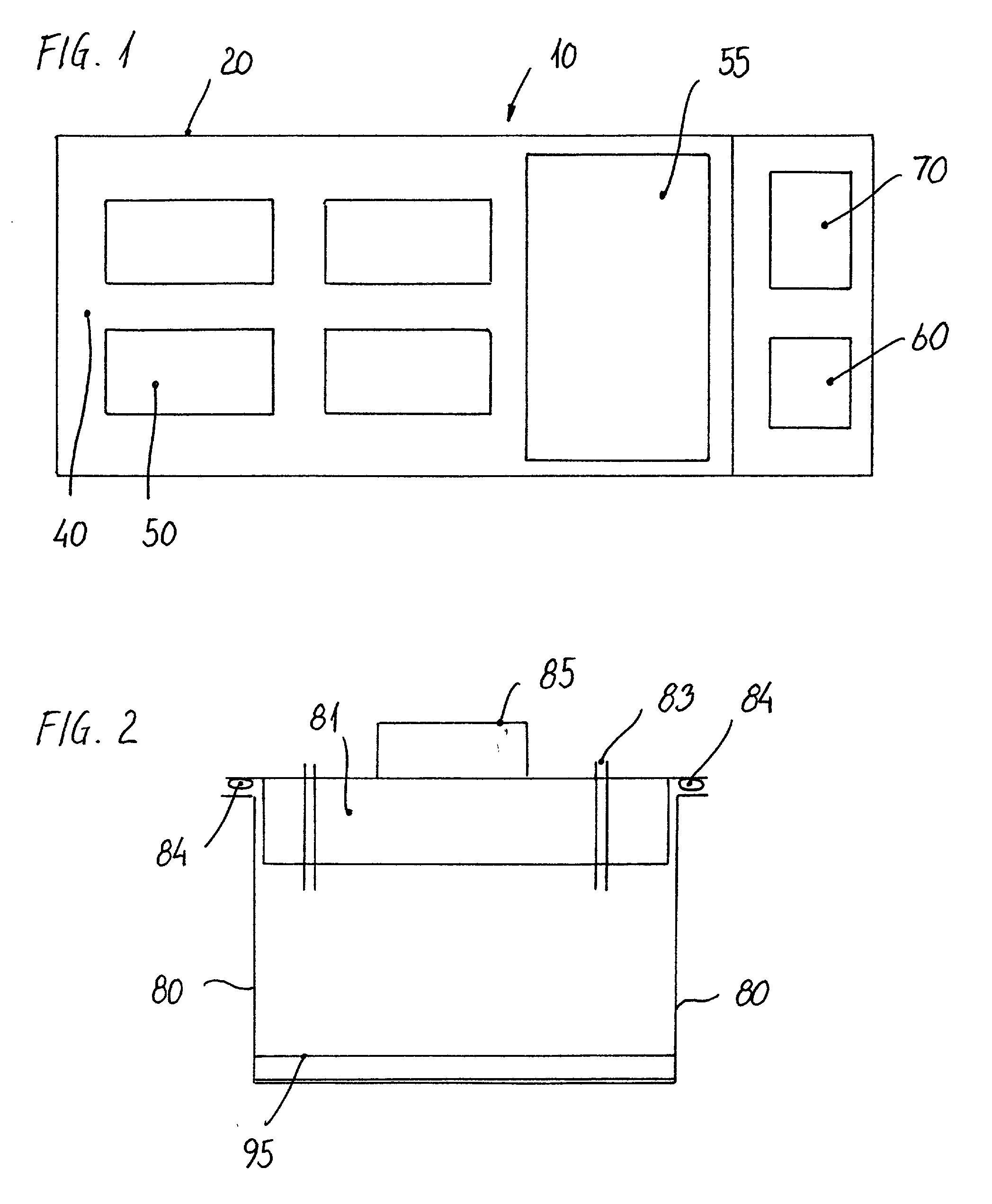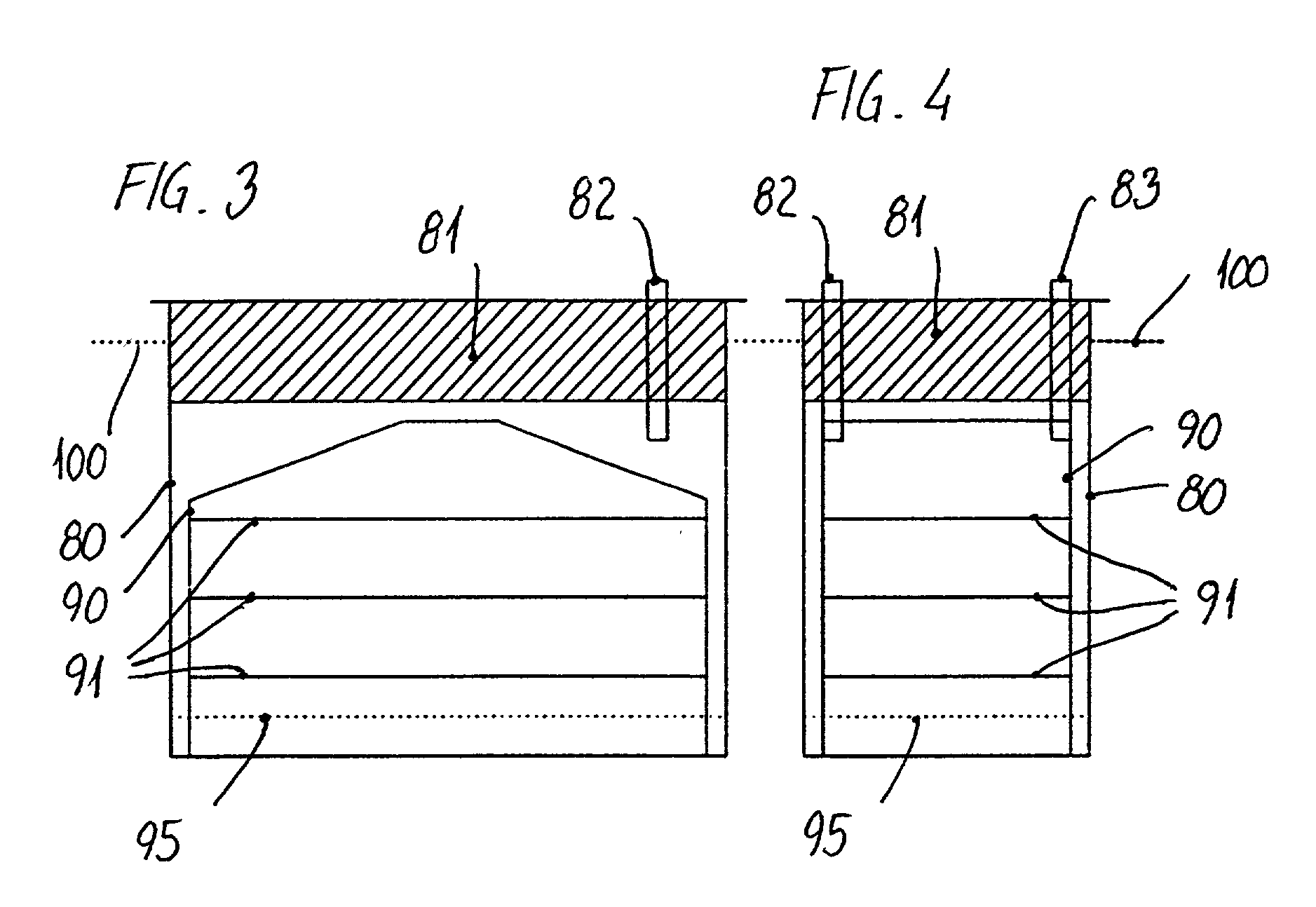Method and apparatus for culturing cells and tissues
- Summary
- Abstract
- Description
- Claims
- Application Information
AI Technical Summary
Problems solved by technology
Method used
Image
Examples
experiment 3
[0103] Pilot
[0104] Bovine oocytes were collected from slaughterhouse-derived oocytes, matured and fertilized in vitro as described in Pilot experiment 1. After 22 to 32 h cocultivation of gametes (fertilization) embryos were vortexed, then randomly distributed into groups and cultured on the granulosa cell monolayer formed spontaneously in the maturation four-well dishes (Nunc, Denmark) in TCM-199 medium supplemented with 5% (10% from Day 4) calf serum. Cultures were evaluated on Day 8. For maturation and fertilization, K-system incubators were used (see Pilot experiment 1). Embryo cultures were performed in 10.times.11 cm laminated foil sacks as described in Pilot experiment 2, filled either with a mixture of 3.5% or 5% carbon dioxide in air, heat-sealed and submerged into a 38.70.degree. C. water bath.
[0105] Results:
[0106] As shown in FIG. 12, significant (P<0.05 by Chi-square test) increase of blastocyst / oocyte rates was achieved, when embryos were cultured in 3.5% carbon dioxide...
experiment 4
[0109] Pilot
[0110] Bovine oocytes were collected from slaughterhouse-derived oocytes, matured and fertilized in vitro as described in Pilot experiment 1. After 22 to 32 h cocultivation of gametes (fertilization) embryos were vortexed, and cultured on the granulosa cell monolayer formed spontaneously in the maturation four-well dishes (Nunc, Denmark) in TCM-199 medium supplemented with 5% (10% from Day 4) calf serum. Cultures were evaluated on Day 8. For maturation and fertilization, K-system incubators were used (see Pilot experiment 1). Embryo cultures were performed in 10.times.11 cm laminated foil sacks as described in Pilot experiment 2, filled either with a mixture of 4% carbon dioxide in air (Pilot experiment 4a) or with expiration air from one person (Pilot experiment 4b), were heat-sealed and submerged into a 38.70.degree. C. water bath.
[0111] Results:
[0112] As shown in FIG. 13, no significant (P>O.l by Chi-square test) difference of the developmental rates of the two groups...
experiment 5
[0115] Pilot
[0116] Bovine oocytes were collected from slaughterhouse-derived oocytes, matured and fertilized in vitro as described in Pilot experiment 1. After 30 to 32 h cocultivation of gametes (fertilization) embryos were vortexed, and cultured on the granulosa cell monolayer formed spontaneously in the maturation four-well dishes (Nunc, Denmark). Before use, the outer frame of the dishes was cut, and the remaining 4.5.times.4.5.times.1 cm dish was used for the experiments. Embryos were cultured in TCM-199 medium supplemented with 5% calf serum. Cultures were evaluated on Day 7. For maturation and fertilization, K-system incubators were used (see Pilot experiment 1). Embryo cultures were performed in 6.5.times.7 cm laminated foil sacks filled with expiration air, heat sealed and submerged into a Minitube transportable incubator (Minitube GMBH, 8311 Tiefenbach, Germany; Ref. no. 19180 / 0000) sealed previously to become waterproof, then filled with water.
[0117] Results:
[0118] Blasto...
PUM
 Login to View More
Login to View More Abstract
Description
Claims
Application Information
 Login to View More
Login to View More - R&D
- Intellectual Property
- Life Sciences
- Materials
- Tech Scout
- Unparalleled Data Quality
- Higher Quality Content
- 60% Fewer Hallucinations
Browse by: Latest US Patents, China's latest patents, Technical Efficacy Thesaurus, Application Domain, Technology Topic, Popular Technical Reports.
© 2025 PatSnap. All rights reserved.Legal|Privacy policy|Modern Slavery Act Transparency Statement|Sitemap|About US| Contact US: help@patsnap.com



